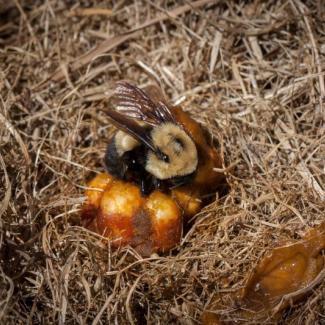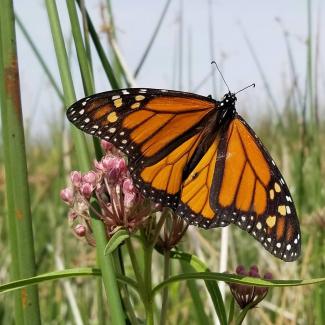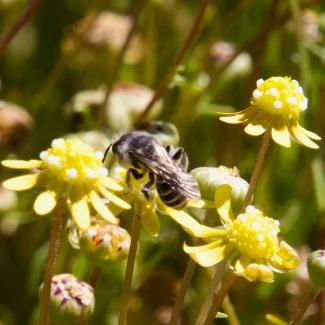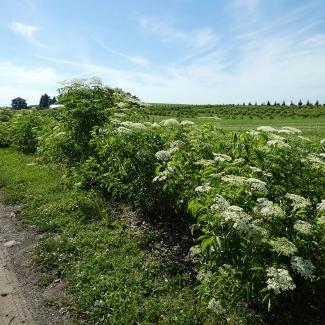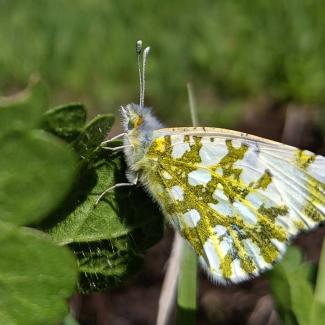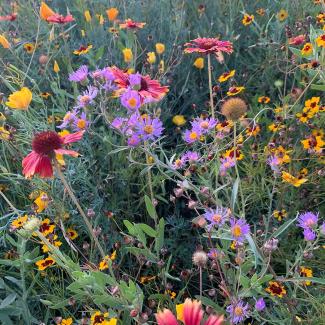Adaptations at Altitude: The Biology of Mountain Snails
28 MinutesGuests: Dr. Lusha Tronstad
Given the name of our podcast, it is no surprise that we talk a lot about bugs, but in this episode, we are stretching our invertebrate muscles and looking at a group of invertebrates that we haven’t considered before—mountain snails!
The Secret Lives of Bumble Bees: Nesting and Overwintering
38 MinutesGuests: Genevieve Pugesek
We’ve all heard the familiar buzz of a bumble bee. Their fuzzy bodies fly around looking for pollen and nectar. But where do bumble bees nest? Where do they spend the winter? And how can we support this part of their lifecycle?
The Salmonfly Project: Anglers, Insect Conservation, and the Future of Freshwater Streams
45 MinutesGuests: Jackson Birrell, James Frakes
Insects play a critical role in rivers, lakes, and streams, acting as a vital food source for many animals and maintaining the health of these freshwater ecosystems. A few of these insects include: mayflies, stoneflies, and caddisflies. The bad news? They are in decline. The good news? There is something we can do about it. This is a new topic for us and one that we are excited to explore.
Bitter Nectar, Toxic Pollen: Pollinators and Plant Chemicals
43 MinutesGuests: Leif Richardson
We’ve spent some time on this podcast discussing pollinators and their life histories but today we are taking a deeper dive into plant chemistry to better understand the relationship between pollinators and their floral resources.
Leave the Leaves or Lose the Insects
34 MinutesGuests: Max Ferlauto
Leave the leaves has become something of a rallying cry and discussion topic in recent years. When the weather starts to cool and leaves begin to fall, we’re presented with a valuable wildlife and gardening resource — but also something of a headache. Do I keep them all? Can I mulch them? Won’t they kill my lawn? What about pests? How do I keep my HOA happy?
Monarchs & Pesticides: Understanding the Impact, Exploring the Solutions
44 MinutesGuests: Emily May
In this episode, we will be taking a closer look at the monarch butterfly, but we won’t be talking about milkweed or nectar plants, or the migration and overwintering sites – at least, not directly. No, our focus is on pesticides and monarchs. Are pesticides a particular concern for monarch butterflies? What are the consequences of pesticide contamination to their habitat? What can we do to provide pesticide-free habitat?
Understanding Native Bee Populations: The State of the Bees Initiative
40 MinutesGuests: Saff Killingsworth
How are native bee species in the US doing in light of the major threats they are facing? What more do we need to know to protect them? There are over 3,600 species of native bees in the United States, but we only know the conservation status (i.e., how well they are doing) of about 20% of them. This makes it difficult to make decisions about how to prioritize bee conservation. In this episode we discuss the State of the Bees initiative: a project to better understand native bee populations in the US.
The Living Fence: Hedgerows as Havens for Insects
32 MinutesGuests: Jessa Kay Cruz
Co-host Matthew Shepherd came from Britain, a country known for its hedgerows. He grew up surrounded by hedges, sometimes many centuries old, crisscrossing the countryside. Early in Matthew's career he helped plant, maintain, and restore miles of hedgerows and got to see up close the wealth of wildlife that live in them. When he moved to America, he was struck by the lack of hedgerows, their place in the landscape frequently filled by barbed wire or other types of fencing. He is very happy to know that this is changing and that there is a movement in this country toward planting hedgerows for their beauty, wildlife value, and economic benefits.
State of the Butterflies in the United States: A Roadmap for Recovery
48 MinutesGuests: Cheryl Shultz, Scott Black
You may already know that butterflies are in decline, but the speed at which it is happening may be surprising. Butterflies are being lost at a rate of 1.3% per year, which means more than one-fifth have disappeared over a 20-year period. These are just a couple of the alarming statistics that emerged from the work of the State of the Butterflies in the United States working group. The group was comprised of scientists from universities, agencies, and the Xerces Society. Their findings have been published in academic journals, including Science. Building on this, Xerces has just released State of the Butterflies in the United States, a report authored by members of the working group that presents a picture of the status of butterflies and offers a vision for how we can reverse the declines.
Bug Banter Live: Building Pollinator Habitat
55 MinutesGuests: Bernardo Niño, Steve Armstead, Emily May, Kevin Burls
One of the most effective ways to contribute to pollinator conservation is to provide the essential components of pollinator habitat. To celebrate Pollinator Week, we invited a panel of Xerces Society experts to help us answer audience questions in this special Bug Banter Live episode.


